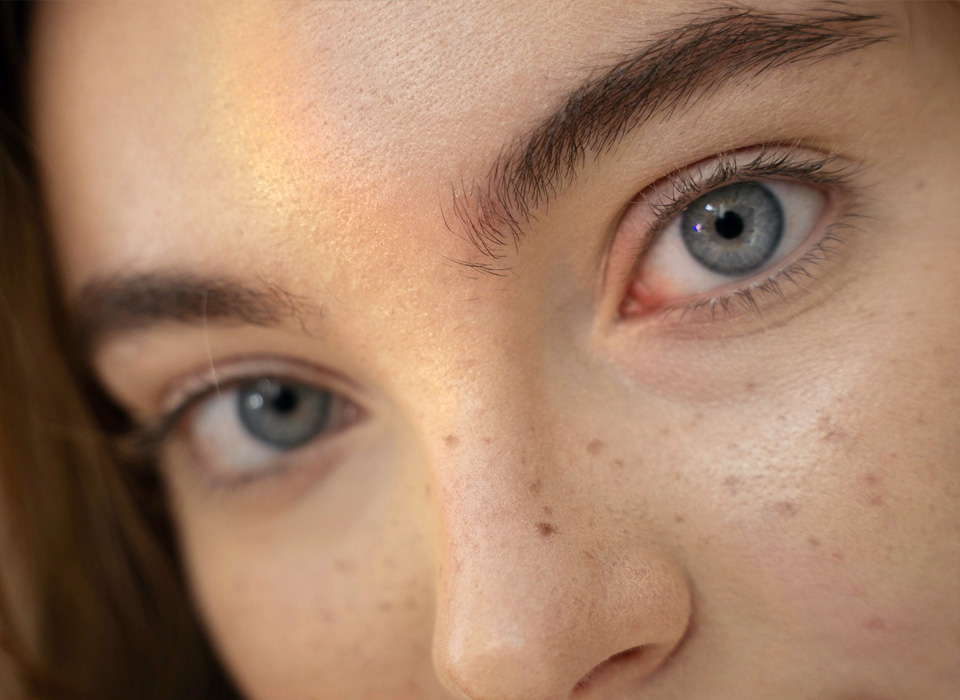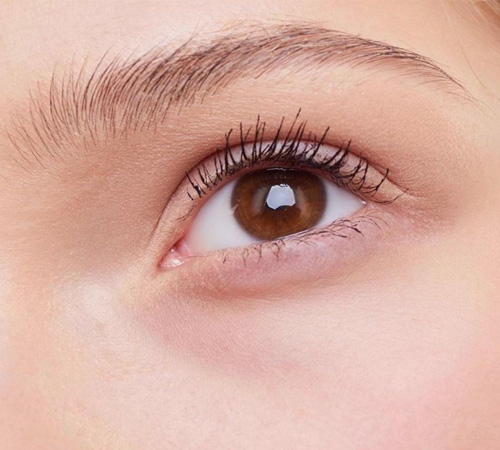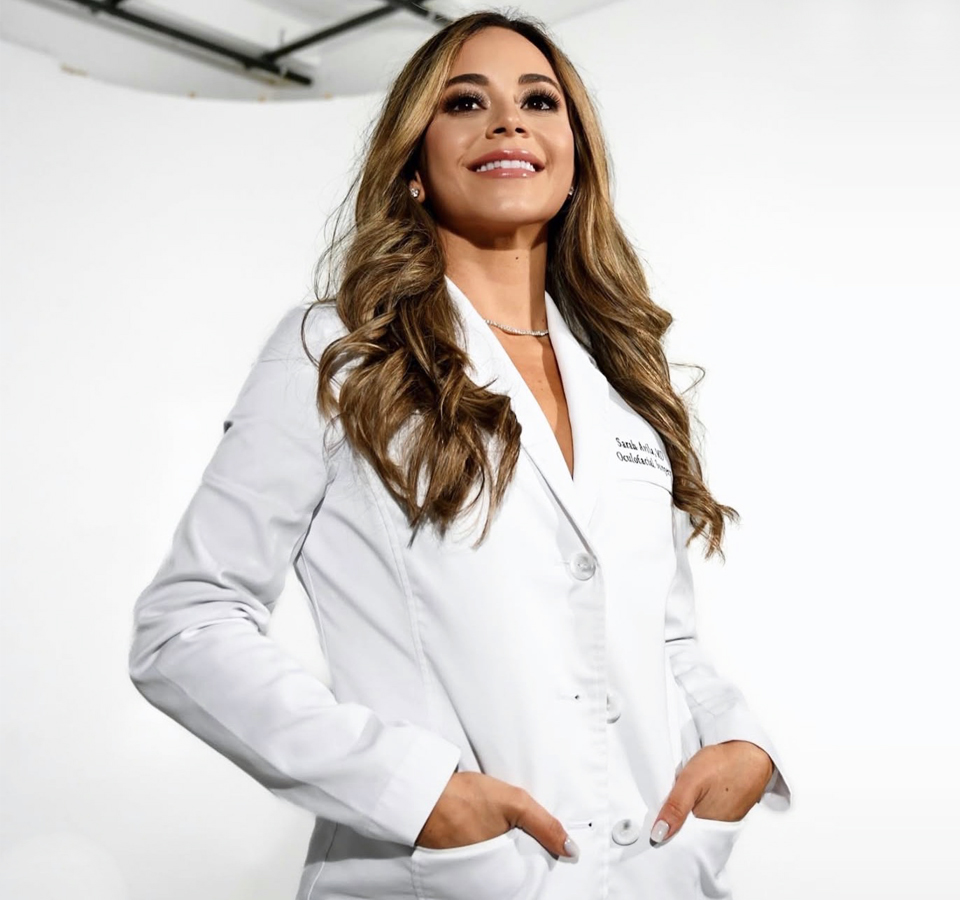Ectropion Repair

Table of ContentsToggle Table of ContentToggle
What Is an Eyelid Ectropion?
Eyelid ectropion is a medical condition where the lower eyelid turns outward, away from the eye. This can cause the inner surface of the eyelid to be exposed, leading to irritation, redness, tearing, and other eye discomfort. It can be caused by factors such as aging, facial nerve weakness, or scarring and often requires surgery to correct.
What Causes an Eyelid Ectropion?
Eyelid ectropion is a condition where the lower eyelid turns outward, away from the eye. It can be caused by various factors, including:
- Aging: The natural aging process can lead to changes in the skin’s elasticity and muscle tone. As people age, the lower eyelid may lose some of its support and flexibility, making it more likely to turn outward.
- Muscle Weakness: Weakness in the muscles and tendons that support the lower eyelid can contribute to ectropion. When these muscles lose their tone or function improperly, the lower eyelid may droop and turn outward.
- Scarring: Scarring of the eyelid or surrounding tissues can distort the normal anatomy of the eyelid. Scar tissue can pull the eyelid away from the eye, causing ectropion. Scarring can result from injury, surgery, or skin conditions.
- Skin Laxity: Excessive skin laxity, often associated with aging, can lead to ectropion. The loose skin may not provide adequate support for the eyelid, allowing it to sag and turn outward.
- Congenital Factors: In some cases, individuals may be born with a predisposition to ectropion due to congenital factors. Congenital ectropion occurs when there is a genetic or developmental abnormality that affects the eyelid’s position.
- Previous Surgery or Trauma: Past eye surgery or trauma can alter the anatomy of the eyelid and its supporting structures, potentially leading to ectropion.
- Facial Nerve Paralysis: Facial nerve paralysis, which can be caused by various factors, including Bell’s palsy or other neurological conditions, can result in muscle weakness and changes in the eyelid’s position, potentially leading to ectropion.
Ectropion can cause a range of symptoms, including tearing, eye dryness, redness, and exposure of the eye’s inner lining. It is important to seek medical attention if ectropion is suspected, as it can lead to eye discomfort and potential complications.
How Is Eyelid Ectropion Surgically Corrected?

- Horizontal Lid Shortening: This procedure involves removing a small section of the lower eyelid to shorten it. By reducing the length of the eyelid, it can be repositioned to sit closer to the eye. The surgeon then sutures the shortened eyelid in its new position.
- Canthoplasty: Canthoplasty is a surgical technique that involves tightening the lateral canthal tendon, which is responsible for the outer corner of the eye’s position. By tightening this tendon, the eyelid can be repositioned and secured in a more anatomically correct position.
- Skin Grafting: In cases where there is significant tissue loss or scarring contributing to the ectropion, a skin graft may be used. Healthy skin from another part of the body is transplanted to the eyelid area to provide additional support and correct the ectropion.
- Conjunctival Resection: If the ectropion has caused excessive conjunctival tissue exposure, a surgical procedure called conjunctival resection may be performed. This involves removing a portion of the conjunctiva (the clear tissue covering the eye) to allow the eyelid to sit more comfortably against the eye.
- Combination Procedures: Surgeons may use a combination of techniques to address various issues contributing to the ectropion. The specific approach will be tailored to the patient’s needs.
After surgery, patients will be provided with post-operative care instructions, which include information on wound care, the use of eye drops or ointments, and follow-up appointments to monitor the healing process and assess the success of the surgery.
Why Choose an Oculoplastic Surgeon for Eyelid Surgery?
Oculoplastic surgeons are highly specialized professionals who focus on the delicate and intricate structures around the eyes. Here are some key reasons to consider when making this choice:
- Expertise in Eye Anatomy: Oculoplastic surgeons have a deep understanding of the anatomy and function of the eye and its surrounding structures. They are uniquely qualified to perform surgeries that affect the eyelids, tear ducts, and the eye socket, ensuring the best outcomes and minimizing the risk of complications.
- Specialization in Eyelid and Periocular Procedures: Oculoplastic surgeons specialize in procedures related to the eyelids, including eyelid surgery (blepharoplasty), ptosis surgery, entropion, ectropion correction, and more. Their specialized training and experience make them highly proficient in addressing a wide range of eyelid issues.
- Focused Training: Oculoplastic surgeons typically undergo comprehensive training that includes ophthalmology and plastic surgery, making them uniquely qualified to address both functional and cosmetic concerns of the eyelids.
Dr. Avila has completed an ophthalmology residency at Mount Sinai Hospital, followed by a two-year fellowship in ophthalmic plastic and reconstructive surgery. She is double board certified by the American Board of Ophthalmology and the American Society of Ophthalmic Plastic and Reconstructive Surgery.
- Minimized Risks: Given their expertise and experience, oculoplastic surgeons can perform eyelid surgery with a higher degree of precision, reducing the risk of complications and ensuring a safer surgical experience.
- Optimal Cosmetic Outcomes: If you are considering eyelid surgery for cosmetic reasons, an oculoplastic surgeon can help you achieve natural, aesthetically pleasing results that maintain the proper function of the eyelids.
- Treatment of Complex Cases: Oculoplastic surgeons are well-equipped to handle complex and challenging cases, including those involving eye trauma and eyelid reconstruction, and can address issues caused by medical conditions or previous surgeries.
- Collaboration with Ophthalmologists: Oculoplastic surgeons are also Ophthalmologists, ensuring that both the functional and aesthetic aspects of your eye health are addressed in a coordinated manner.
- Continual Advancements: Oculoplastic surgeons stay up-to-date with the latest advancements in eyelid and periocular surgery, offering their patients access to state-of-the-art techniques and technology.
Dr. Avila is a qualified, double board-certified oculoplastic surgeon who can provide you with the best possible care and outcomes, whether your goals are functional or cosmetic. Their specialization in this field and focus on the unique needs of the eye and its surroundings make them the ideal choice for these procedures.

Sarah Avila, MD
Board Certification:
Oculofacial Plastic Surgery
Specialization:
Eyelid Surgery & Aesthetics
Dr. Sarah Avila is a Double Board-Certified Oculofacial Plastic Surgeon in Miami, Florida. After completing medical school, Dr. Avila completed a residency in ophthalmology at the Mount Sinai Hospital, followed by a highly competitive two-year ASOPRS-accredited fellowship in reconstructive and cosmetic oculofacial surgery at Emory University.






